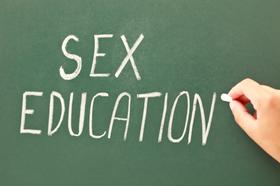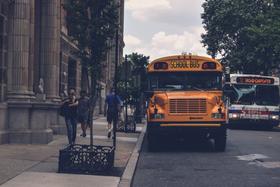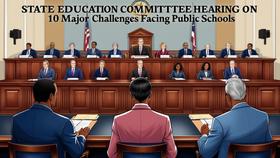Discipline, Attendance & Graduation Rates in U.S. Public Schools: 2025 Update
Understanding the health of public school education requires tracking key indicators such as student discipline, attendance and graduation rates. For parents, educators and students alike, these metrics provide insight into school climate, student engagement and overall system performance. This article presents the latest data (2023–25) for public schools in the United States, highlights trends, discusses implications and offers expert commentary.
1. Graduation Rates: A Strong Foundation with Lingering Gaps
One of the most encouraging signals in U.S. public school education is the consistent rise in on-time graduation. According to the National Center for Education Statistics (NCES), in the school year 2021–22 the adjusted cohort graduation rate (ACGR) for public high school students reached 87 percent, up seven percentage points from a decade earlier. National Center for Education Statistics
Key breakdowns
What this means
Public school systems are doing better in retaining, supporting and graduating students within four years. That gives parents and students greater confidence in the value of a diploma. But the disparities underline that equity remains a major challenge.
Consideration for 2025 and beyond
Graduation numbers are projected to peak around 2025 and then decline in many states due to demographic shifts.
Schools and districts must therefore maintain momentum even as pressure mounts on resources and enrollment.
Graduation remains necessary but not sufficient: the nature of the diploma (rigour, readiness for college/career) matters.
2. Attendance Trends: Rebounding, But Risks Persist
Attendance is the engine behind achievement. When students miss school, their chances of falling behind, disengaging or dropping out rise dramatically.
Recent findings
A mid-year snapshot (Sept 2024–Jan 2025) across 1 million+ students in 143 districts shows younger students nearing pre-pandemic attendance levels. High school attendance remains more fragile.
Chronic absenteeism is reported at ~29.7 percent for 2021–22; early indications suggest a modest drop to ~27.8 percent in the 2022–23 term in 11 states.
Why this matters
High rates of absence reduce instructional time, disrupt continuity, and are strong predictors of other risks including lower grades, disciplinary issues and non-graduation.
Attendance by the numbers (summary)
| Metric | Latest estimate | Note |
|---|---|---|
| Chronic absenteeism (≥10% of days missed) | ~29.7% in 2021-22; ~27.8% preliminary for 2022-23 | National average, some states unreported |
| Mid‐year attendance snapshot (2024-25) | Still lower in high schools than pre-pandemic levels | Indicates ongoing recovery needed |
Implications for schools
Efforts to boost attendance should prioritise grades 9-12, where disengagement is more acute.
Schools might deploy early warning systems for absences, strengthen family-school partnerships and integrate engagement strategies.
Given that attendance ties closely to discipline and graduation, it functions as a foundational indicator.
3. Discipline: Shifts in Strategy and Persistent Disparities
Discipline data reveal how schools manage student behaviour, maintain climate and ensure safety. The trends are complex: some districts report declines in suspensions, yet disparities and alternative discipline practices remain prominent.
National-level insights
The report Student Discipline and School Climate in U.S. Public Schools shows that in a recent year ~638,700 students (approx. 1 percent of K-12 public school enrollment) received one or more out-of-school suspensions. ERIC
In specific district reports: for example, the 2023-24 report for the Office of the State Superintendent of Education (DC) details state-level discipline data for schools and student sub-groups.
Trends and observations
Some districts report sharp reductions in disciplinary incidents, suggesting the effectiveness of policy shifts, trauma-informed practices and improved engagement (see local news examples).
At the same time, disparities persist: schools with similar student demographics often display very different suspension rates — raising questions about consistency and equity in discipline practices.
Key considerations
Suspension and expulsion practices remain under scrutiny, particularly their impact on marginalized student groups, student-school relationships and long-term outcomes.
Discipline is not just a response mechanism; it is a lever for culture, climate and student belonging.
Over-reliance on exclusionary discipline may undermine attendance, engagement and ultimately graduation.
Discipline snapshot (selected highlights)
| Metric | Observation |
|---|---|
| Out-of-school suspension prevalence | ~1 percent of public K-12 students in a recent year. |
| Variation among schools | Significant differences even among schools with similar students. |
4. Interrelations: How Attendance, Discipline and Graduation Connect
It is essential to view attendance, discipline and graduation not as isolated metrics, but as interconnected indicators of school health and student success.
Attendance → Engagement → Graduation: Students who attend regularly are more likely to be engaged, avoid behavioural issues, and persist to graduation.
Discipline → Attendance & Engagement: Harsh or exclusionary discipline can lead to lost instructional time, which in turn may affect attendance and increase risk of dropout.
Graduation → Future Opportunity: Graduation opens doors for higher education, workforce participation and social mobility — it is the outcome that attendance and discipline earlier help secure.
Illustration
If a school issues frequent suspensions, students miss class time (attendance drops) and may become disengaged. Over time, that disengagement undermines the likelihood of on-time graduation. Conversely, a school with strong attendance culture and equitable discipline is better positioned to boost its graduation rate.
5. What Schools and Families Should Consider in 2025
For educators and administrators
Focus on system-wide attendance strategies, especially in upper grades: early warning systems, mentorship, incentives, and family engagement.
Review discipline practices through an equity lens: Are suspension rates higher for certain groups? Are alternative interventions consistent and effective?
Monitor graduation rate trends not just at the aggregate level but by subgroup and by school: look for pockets of under-performance and tailored supports.
Recognise that although the national graduation rate is high (87 percent), the number of high school graduates is set to decline due to demographic changes. WICHE
For parents and students
Ensure your child maintains strong attendance habits: regular presence signals engagement and builds momentum.
Ask the school about its discipline policies and how they affect instructional time; transparent discipline and fair practice matter.
Review the school’s graduation outcomes: Is the school on track to graduate students on time? What supports exist for students who struggle or fall behind?
Especially for high school families: check that the diploma is meaningful (rigour, college/career readiness) rather than simply the attainment of a certificate.
6. Looking Ahead: Emerging Challenges & Opportunities
With the projected decline in graduate counts starting after 2025, schools may face pressure to refine strategies, maintain stakeholder confidence and adapt to changing student populations.
The COVID-19 pandemic’s ripple effects still matter: attendance patterns, student behaviour and engagement are still stabilising, and schools must continue to respond.
Equity concerns in discipline remain unresolved: the gap in disciplinary outcomes for students of colour, students with disabilities and other historically marginalised groups demands ongoing attention.
Data transparency matters: families and educators benefit when attendance, discipline and graduation data are available, accessible and actionable.
The partnerships between schools, families and communities are more important than ever: no indicator stands alone, and the best outcomes derive from collective action.
Summary Table: Key Indicators for 2025
| Indicator | Latest Data / Trend | Implication for Schools & Families |
|---|---|---|
| Graduation rate (public high schools) | ~87% in 2021–22 | Strong overall performance, but sub-group gaps |
| Chronic absenteeism | ~29.7% in 2021-22; ~27.8% (preliminary) for 2022-23 (Skillademia) | Attendance remains a risk factor |
| Discipline (out-of-school suspensions) | ~1% of K-12 public students in recent year | Discipline practices vary widely and matter |
In conclusion, the state of U.S. public schools in 2025 presents a cautiously positive picture: graduation rates are at record levels, attendance is recovering and some districts report improvements in discipline. Yet challenges remain. Attendance must continue to improve, discipline practices require consistent attention and equity gaps persist. For parents, students and educators, monitoring these three key indicators—discipline, attendance and graduation—is a practical way to assess the health and prospects of a school. By doing so, stakeholders can support schools that not only send students across the finish line but do so in ways that foster engagement, equity and long-term success.















